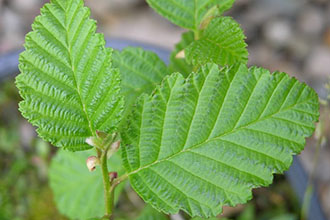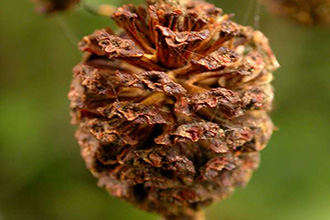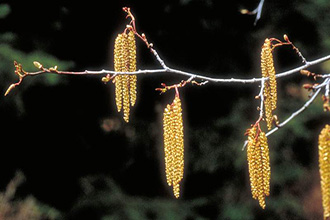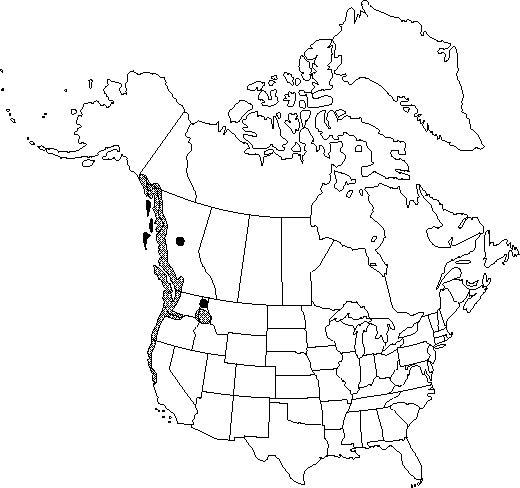Taxonomy: Kingdom - Plantae (plants). Subkingdom - Tracheobionta (vascular plants). Superdivision - Spermatophyta (seed plants). Division - Magnoliophyta (flowering plants). Class - Magnoliopsida (dicotyledons). Subclass - Hamamelididae. Order - Fagales. Family - Betulaceae (birch). Genus -Alnus Mill. Species - Alnus rubra Bong.
Ecology: Red alder is the largest American alder. It is a rapidly growing, short-lived, medium-sized, deciduous tree, generally with one straight distinct trunk. Red alder is an early, nitrogen fixing, seral species. It quickly invades forest openings, such as those created from fires, logging, wind throws, or road cuts, and it also pioneers volcanic mud flows. Historical evidence suggests that the distribution of red alder was much more restricted than it is today; it occurred chiefly along streams and in other wet areas. Continual disturbance over the past 100 years, primarily from logging, has created an abundance of open areas with bare mineral soil which red alder has colonized, thus increasing its acreage dramatically. This is especially true of uplands, where it was previously infrequent.



